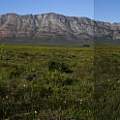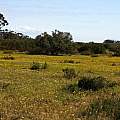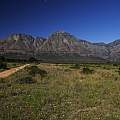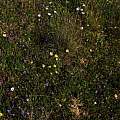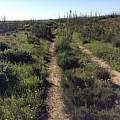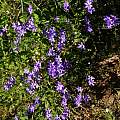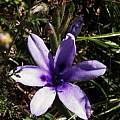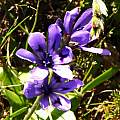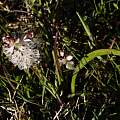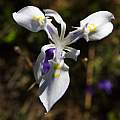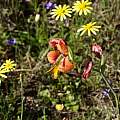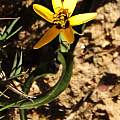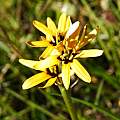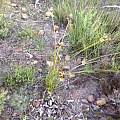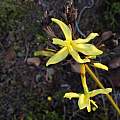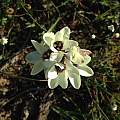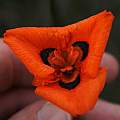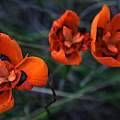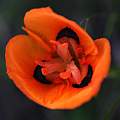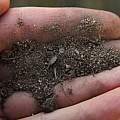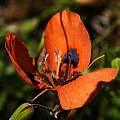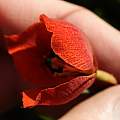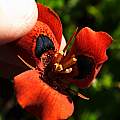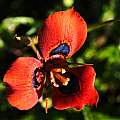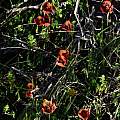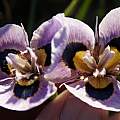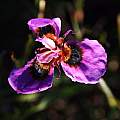(Don't confuse this place with Elandsberg Eco Tourism, a resort about 100 miles / 160 km to the north.)
The Elandsberg Nature Reserve is part of a working farm and resort called Bartholomeus Klip. The reserve is about two miles / 3 km east of the town of Hermon, adjacent to the Obiqua mountains. It's located in a large area of renosterveld (silty bottom land) that hosts a wide variety of bulbs in the spring, some of them growing nowhere else.
The reserve is open to guests of the resort, and also to day visitors who pay a fee. Jeep tours of the reserve are available, and there are also mountain bikes you can borrow. Inquire at the office; they can tell you what's in bloom at the moment and where to find it.
If you choose the bike option, give yourself plenty of time to explore. Although the reserve is on flat land, it is several miles long, and the roads are rutted jeep tracks in many areas, so you can't travel fast. Also bring insect repellant – in the spring there are flies and sweat-loving gnats in some areas.
Click on the image below for a panoramic view from the western edge of the reserve looking east toward the Obiqua range:
Annuals and bulbs blooming in the reserve in September 2016, plus a view of one of the jeep tracks:
Geissorhiza aspera, two views of a Babiana species, and a Lachenalia species
Probably Moraea fugax, Gladiolus alatus, two views of Baeometra uniflora.
Two views of a Bobartia species, a rush-like plant that has yellow flowers at the stem tips. Plus probably Ixia abbreviata (syn. Ixia lutea).
Among bulb enthusiasts, the Elandsberg Reserve is known as the only home of Moraea villosa ssp. elandsmontana. The flowers are a vivid tangerine-orange color with very dark blue-black eyes. Below are several views of the flowers, and a photo of the silty renosterveld soil where it grows.
The reserve also hosts a beautiful red form of Moraea tulbaghensis (formerly known as Moraea neopavonia). Growing in a grassy area of about 50 x 100 meters at the western edge of the reserve, these flowers range in color from dark orange to brick red, many with dark speckles and streaks. Although the land in which the plants grow looks dry, there's a small pond and swampy area nearby, so they probably have plentiful underground water in winter.
Moraea villosa ssp. villosa also grows in the reserve. Most of the flowers I saw were pale violet with a dark eye (first photo), but one specimen was deep violet with an unusual maroon ring around the eye. This flower was growing in the middle of a jeep track, where it was battered by passing vehicles.
Photos and text by Michael Mace.
